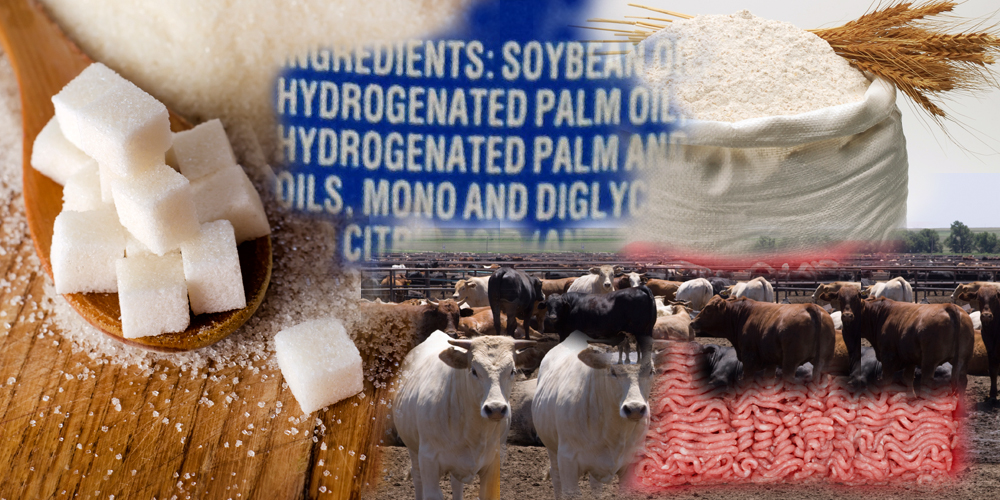
Inflammation is simply your immune system in action. It is a natural response to infection or injury characterized by redness, swelling, pain, and heat. These mechanisms are important because they shield the rest of the body from further harm. But when inflammation is triggered inappropriately it can cause needless damage, destroying healthy tissues. If it becomes chronic it can even promote atherosclerosis (hardening of the arteries), stimulate the growth of cancer, or lead to degenerative arthritis. For prevention, a healthy diet is essential. Just as certain foods act as medicine, reducing inflammation and combating disease, other foods promote inflammation and are best avoided.
As a naturopathic doctor, I see many patients with chronic, low-grade inflammation. This may be hard to spot without blood tests because the symptoms can be mild, but the long term health implications are serious. Symptoms like headaches, hay fever, arthritis and sore muscles can all be caused by chronic inflammation. As part of their treatment I frequently advise patients to stay away from the following pro-inflammatory foods.
Sugar
Sugar provides instant energy for our cells. When we exercise, for example, sugar is used to fuel our heart and muscles. Unfortunately, many of us are leading sedentary lives, spending most of our day sitting behind a desk. If sugar is eaten and not burned off with exercise or other activities it can stay in the bloodstream and cause elevated blood sugar. Excess sugar in the blood causes a host of problems including the production of AGEs, advanced glycation end-products. These AGEs are produced when sugar binds to various proteins “glycating” them. AGEs promote inflammation and have been implicated in arthritis, diabetes, heart disease and the premature aging. Although refined sugar and high fructose corn syrup are major culprits in the standard American diet, natural sweeteners also elevate blood sugar. Excess consumption of fruit juice, honey, agave, even raisins can lead to glycation. Actually, all carbohydrates are converted into sugar before they can be absorbed into the blood. 1 cup of cooked pasta has approximately 40 grams of carbohydrates which will all be converted to simple sugar during digestion. A 12 oz. serving of sweetened cola also has about 40 grams of carbohydrates. So eating a large plate of pasta or a bag of oranges can raise your blood sugar as much as drinking a soda! The difference is that complex carbohydrates like pasta, potatoes and rice are absorbed more slowly than simple sugars because they need to be digested first. That means that blood sugar will not rise as quickly, but it can easily rise as high over time. This can be partly prevented by combining starchy foods with fats and proteins in the same meal. Fat and protein slows the digestion of carbohydrates causing them to enter the blood stream gradually. This extended absorption helps prevent blood sugar spikes.
Gluten
Gluten is one of the primary proteins found in wheat, rye, barley and triticale. It provides the elasticity in bread flour and increases the shelf life of baked goods. But in certain people it can trigger a serious autoimmune condition called celiac disease. Many other people suffer from gluten sensitivity, a milder reaction that can still cause significant suffering. New evidence shows that gluten can promote inflammation even without an allergy or sensitivity and it has been linked to weight gain and obesity. Gluten can be hard to avoid. It is in all standard pasta, bread, crackers, tortillas and pastries, and it is frequently added to other foods in the form of food starch, a thickener. But with increased awareness of celiac disease and gluten sensitivity are a lot more gluten-free products available. Most health conscious grocery stores now have a gluten-free section and there are multiple options for online ordering: Grindstone Bakery and Mariposa Baking.
Hydrogenated oil
These solid vegetable oils were developed to increase the shelf life of mass-produced foods. It was a brilliant idea that had an unfortunate side effect -- the production of trans fatty acids. Trans fatty acids are foreign to the human body since they are rarely ever produced in nature. When people consume these trans fats their inflammatory markers rise along with their risk for heart disease and diabetes. Trans fats are found in margarine, vegetable shortening and many processed foods. Because of this it is important to read your labels whenever you buy something that is pre-made. Trans fats will often be labeled as hydrogenated or partially hydrogenated oils.
Commercially produced, grain-fed meat
Meat, especially red meat, is very high in a type of fat called arachidonic acid (AA). Small amounts of AA are vital for health and it is an important nutrient for the developing brains in children. In adults, however, large quantities of AA form inflammatory chemicals. In fact AA has been associated with the development of various diseases including Alzheimer’s disease, arthritis, and cancer. Arachidonic acid is an omega-6 fatty acid. It must be formed from other omega-6 fats like those present in corn and soy, the major types of commercial animal feed. The good news for carnivores is that grass-fed animals have a different fatty acid profile than standard animals raised in feed-lots. Green grasses are high in omega-3 fatty acids, which are transferred to the meat. Grass-fed beef still contains AA but it also has high levels of omega-3 fatty acids. These omega-3s are very beneficial; they reduce inflammation, improve cholesterol and reduce anxiety and depression. For an optimal fatty acid profile it is important to choose meat that has been 100 percent grass-fed and never grain-finished. There are numerous local resources (Marin Sun Farms and Tara Firma Farms) for 100 percent grass-fed beef and lamb so that you can have your steak and eat it too.